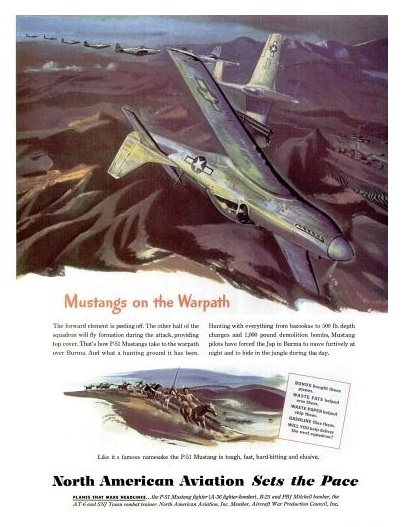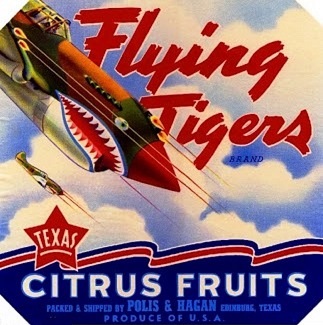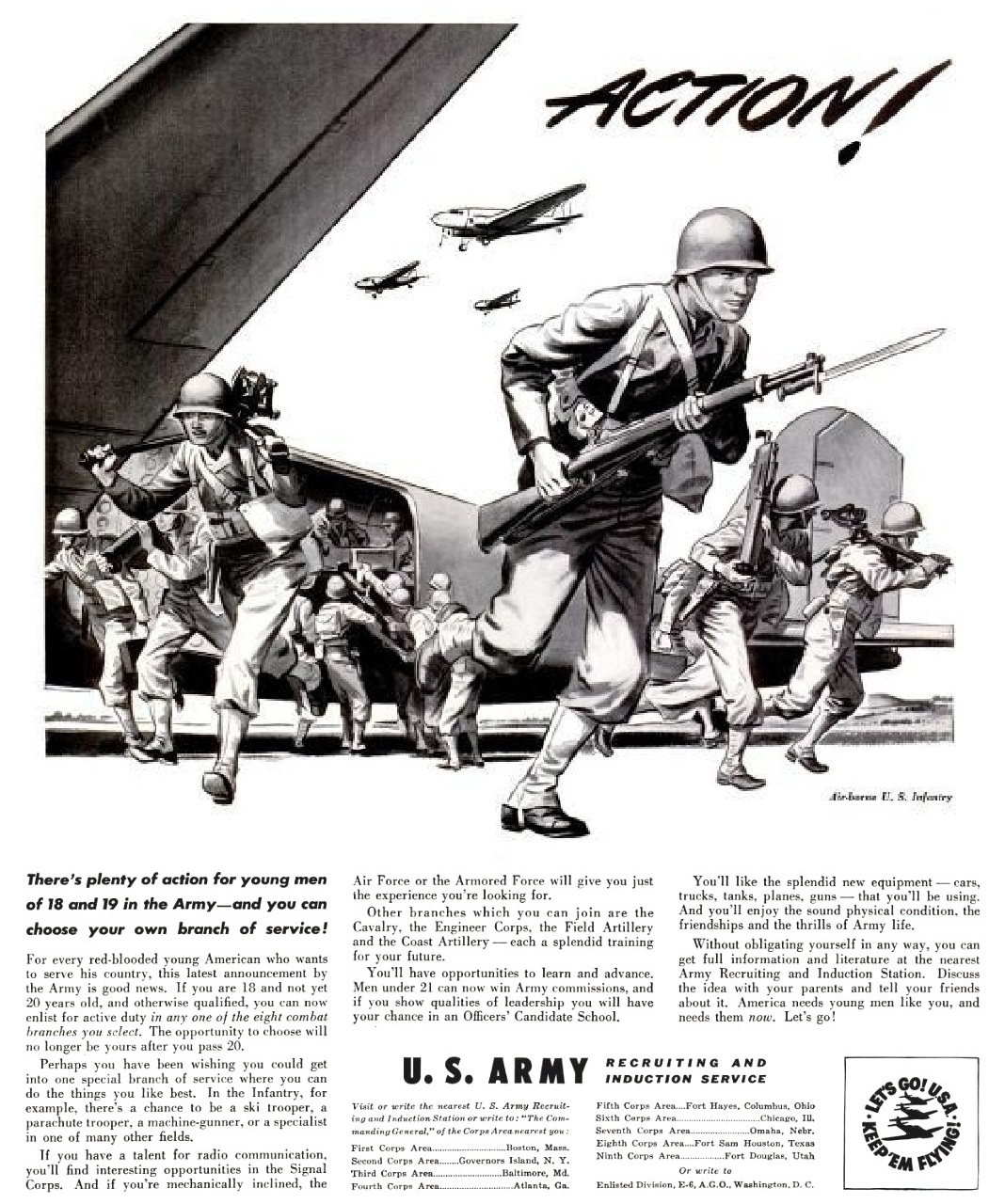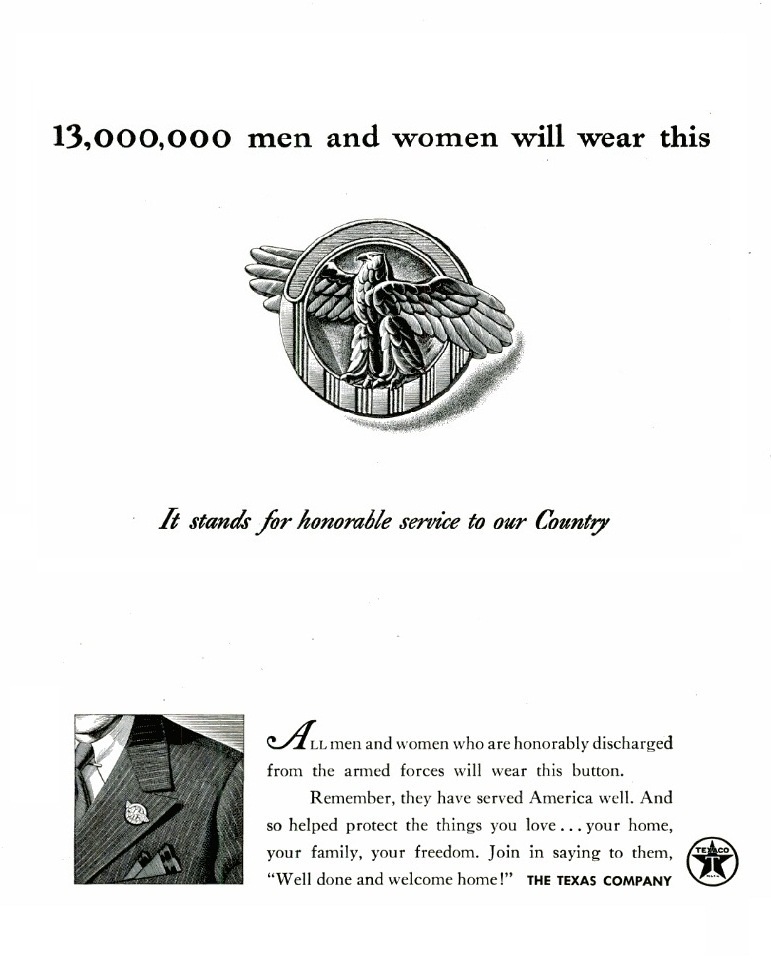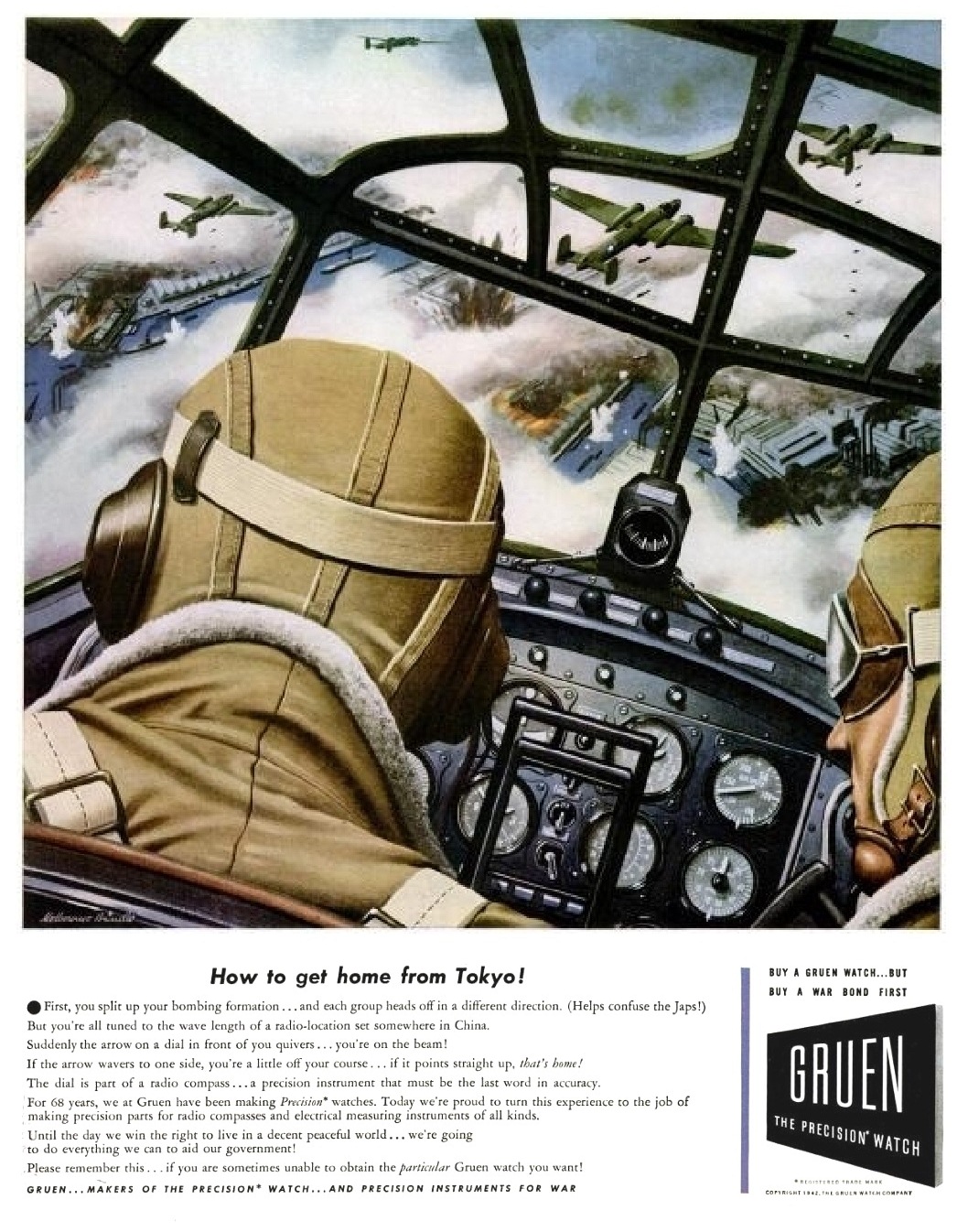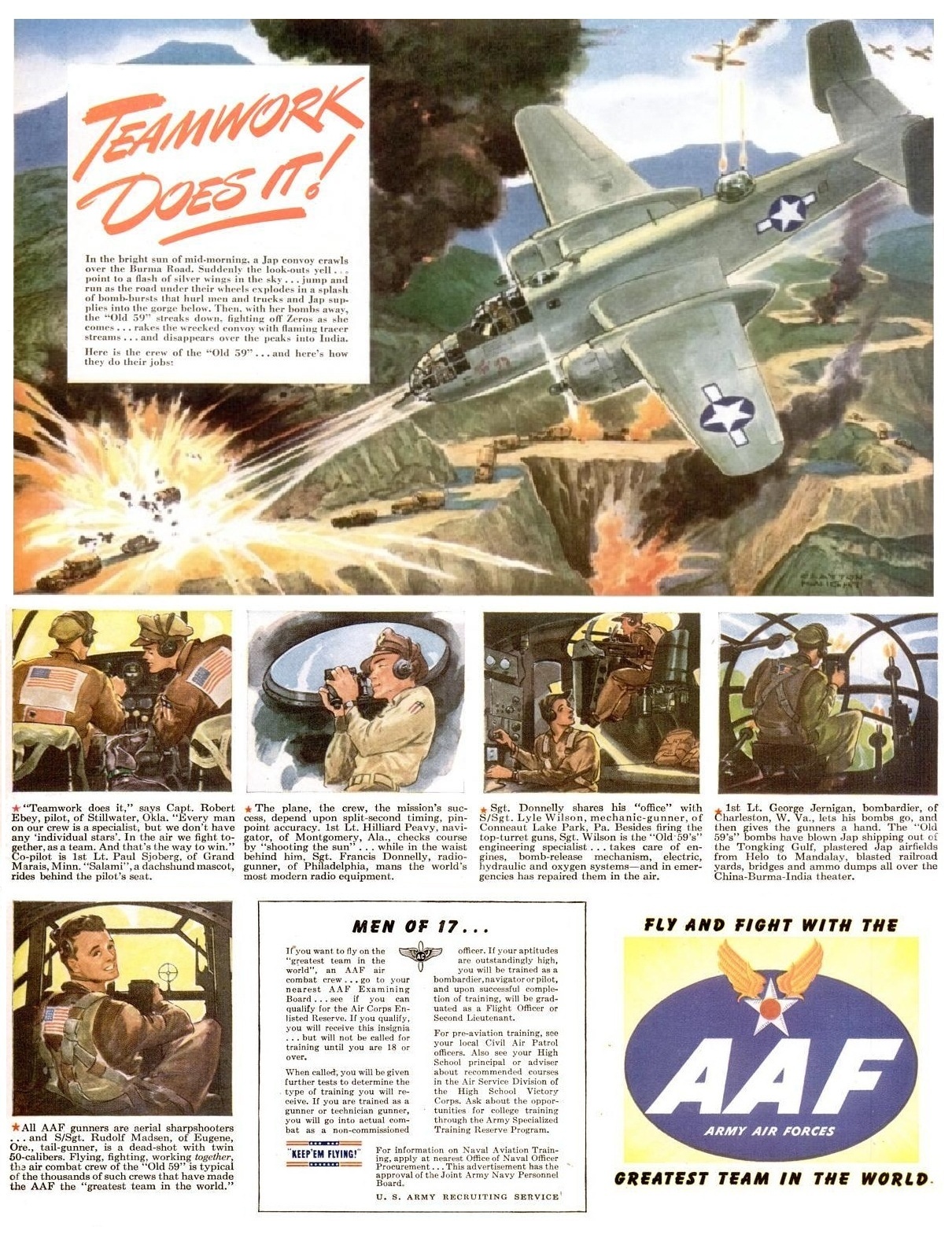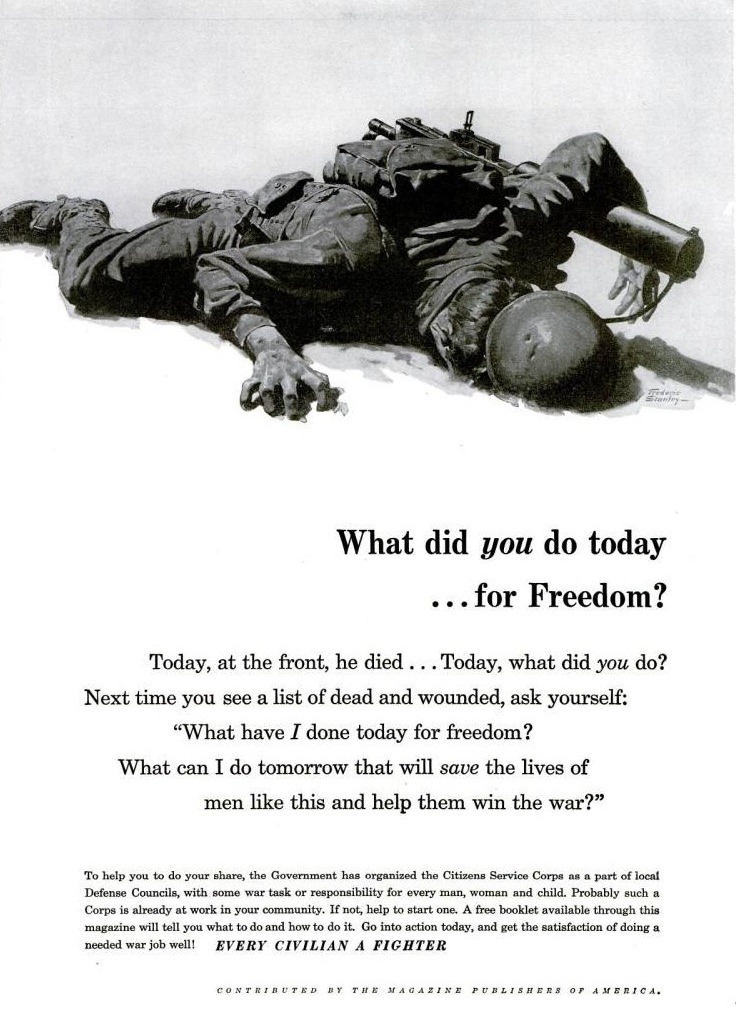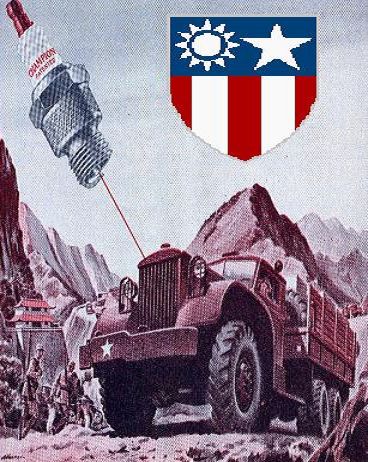
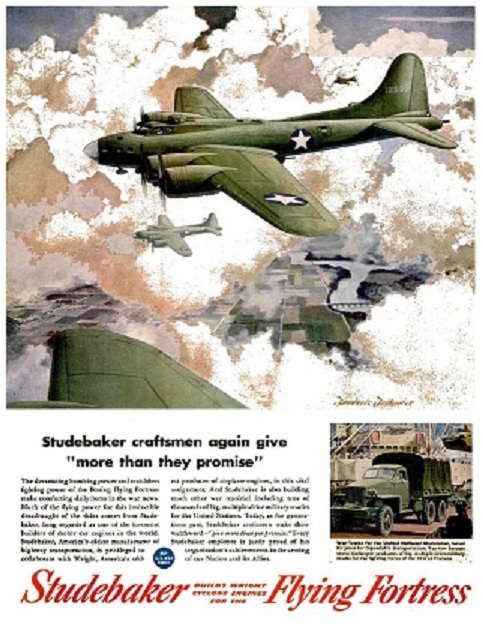 Studebaker Flying Fortress ?
Studebaker Flying Fortress ?At first glance it appears that Studebaker is advertising their Flying Fortress!
Actually they are advertising the fact that they build Wright Cyclone engines for the Boeing B-17 bomber.
Also shown are 6x6 military trucks.The trucks probably made it to CBI but the B-17's were mostly limited to use over Europe.
Automobile manufacturers ceased car production and instead built things like airplane engines, trucks and tanks.It was not unusual for a company like Studebaker to build Wright engines for Boeing planes.
Click on the image of the ad to take a closer look.

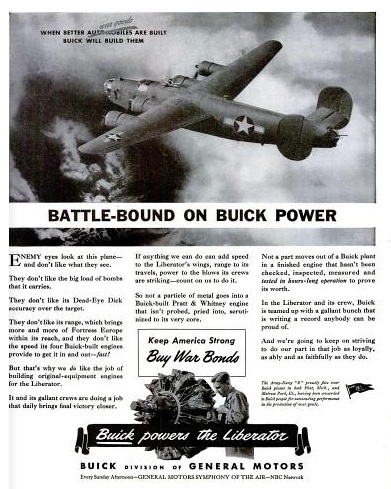
Buick Powers the Liberator
Here Buick advertises the fact that they build Pratt & Whitney engines for the Consolidated B-24 Liberator bomber.Many "Libs" saw service in CBI.
Click on the image of the ad to take a closer look.

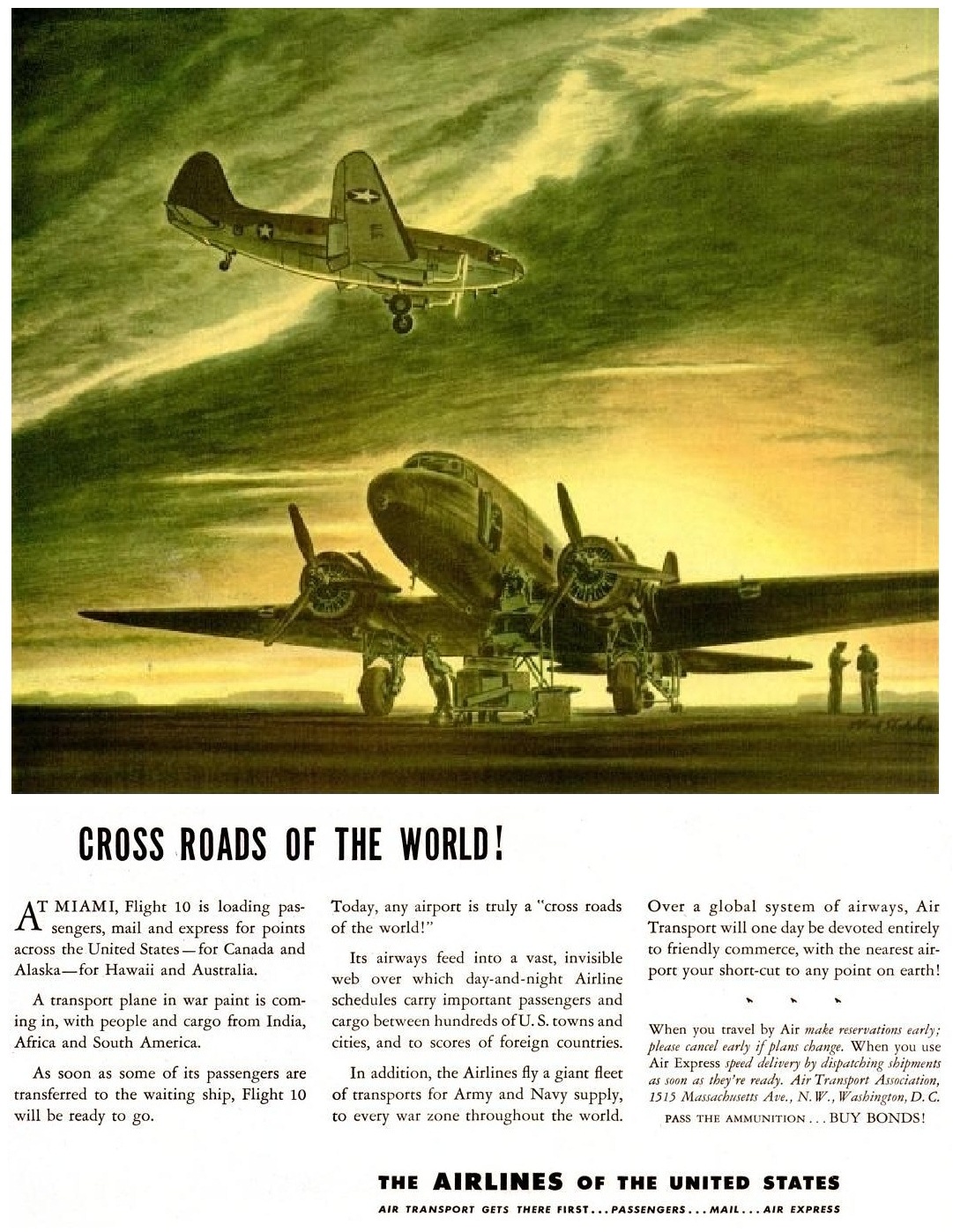
The Cross Roads of the World include India in this ad from the Air Transport Association.
The scene depicts a Curtiss C-46 "Commando" passing over a Douglas C-47 "Skytrain."
Both planes were derived from designs for civilian passenger aircraft.Over 10,000 C-47's were built during the war.Just under 3,200 C-46's were built.
Click on the image of the ad to take a closer look.

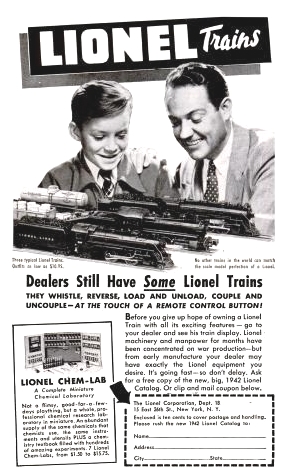
Plastic and metal were needed for war materials so there was none to make toy trains.Lionel Corporation, like many other small manufacturing companies, halted normal production and instead built necessary items for war.Lionel produced nautical items for the United States Navy.
Lionel also introduced the so-called "paper train," a detailed set of cut-and-fold models of Lionel trains printed on cardstock that was notoriously difficult to put together.
Advertised here is the fact that there were still some already produced trains at dealers and the 1942 catalog, which would have been printedbefore Pearl Harbor, was available for dreamers.
The iconic Lionel Trains are still around, now mostly "Made in China."
Click on the image of the ad and take a closer look...

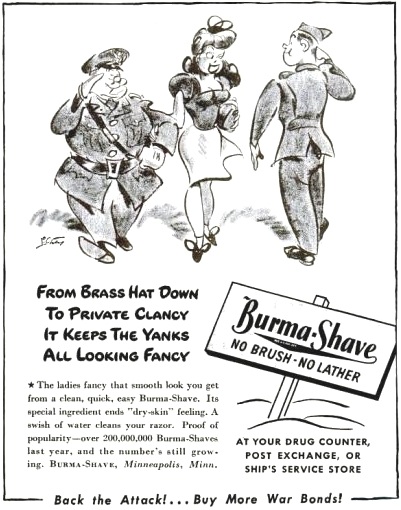
Besides the obvious name connection, Burma Shave was said to be made from ingredients having come "from the Malay Peninsula and Burma."The Burma-Vita company was famous for its rhyming sayings (as in the ad at right) and for roadside signs placed in sequence along U.S. highways.
Burma Shave brushless shaving cream was introduced in 1925 and was popular during World War II.Eventually declining sales caused it to disappear from store shelves in the early 1960's.
Click on the image of the ad and take a closer look...

Another advertisement for Champion Spark Plugs.This one features the Corps of Engineers and a bulldozer at work on an airfield.

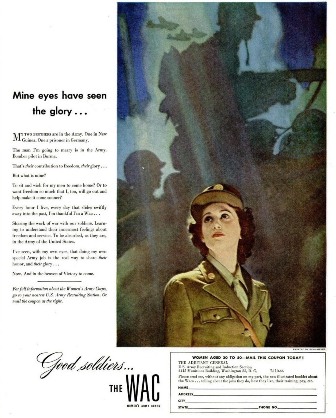 Women's Army Corps.
Women's Army Corps.Formed in 1942 as an auxiliary unit of the Army, the Women's Army Corps became a full branch in 1943, intended to free-up men for combat duty.It did just that, making it not so popular with those men.
Over 150,000 women served in the U.S. Army during the war, most in the U.S., although many did go overseas.
The "WAC" featured here has two brothers in the Army and the man she is going to marry is a bomber pilot in Burma.
Click on the image of the ad to take a closer look.

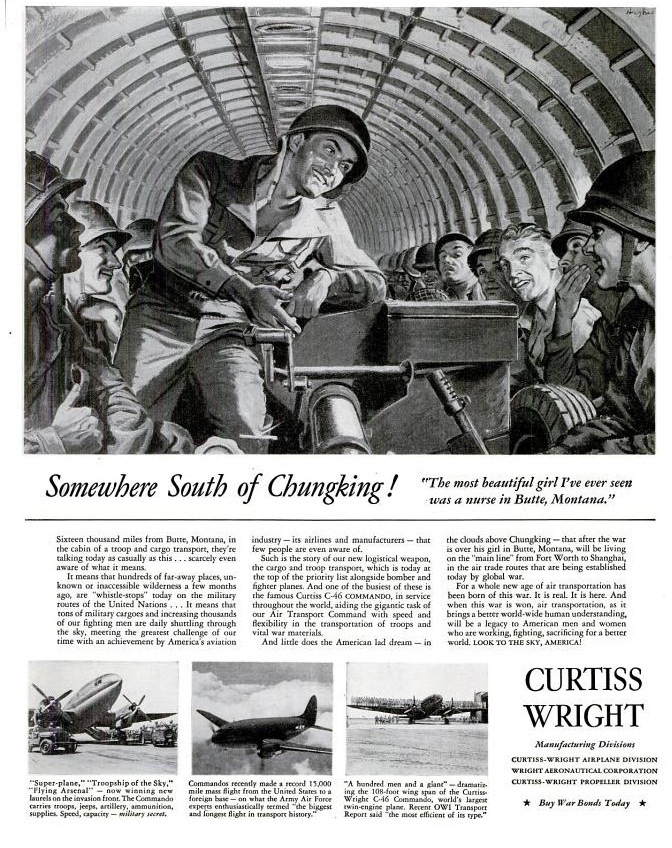 Somewhere South of Chungking!
Somewhere South of Chungking!Hump pilots got a lift when the more reliable Curtiss C-46 Commando transport entered service in CBI.
Like most airplane manufacturer's ads, this one also features an "after the war" theme.
Click on the image of the ad to take a closer look.

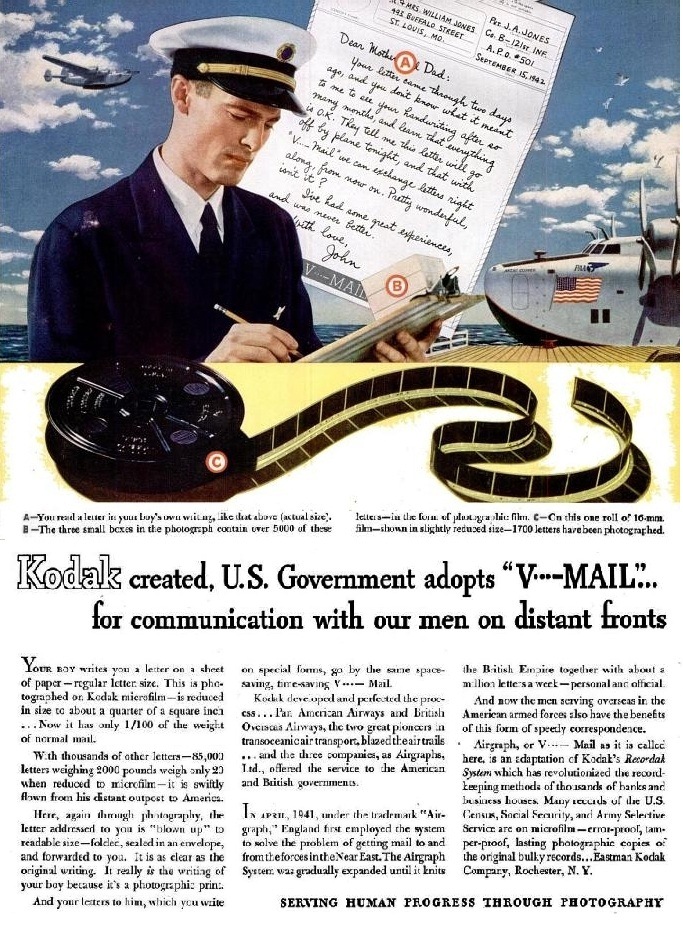
Kodak created V-Mail "Victory Mail" was developed to save size and weight transporting mail to and from overseas GI's.
V-mail correspondence was on small letter sheets that would go through censors before being photographed and transferred to negative microfilm. Upon arrival to their destination, the negatives would be blown up to 60% their original size and printed.
According to the National Postal Museum, "V-mail ensured that thousands of tons of shipping space could be reserved for war materials. The 37 mail bags required to carry 150,000 one-page letters could be replaced by a single mail sack. The weight of that same amount of mail was reduced dramatically from 2,575 pounds to a mere 45."
Click on the image of the ad and take a closer look...

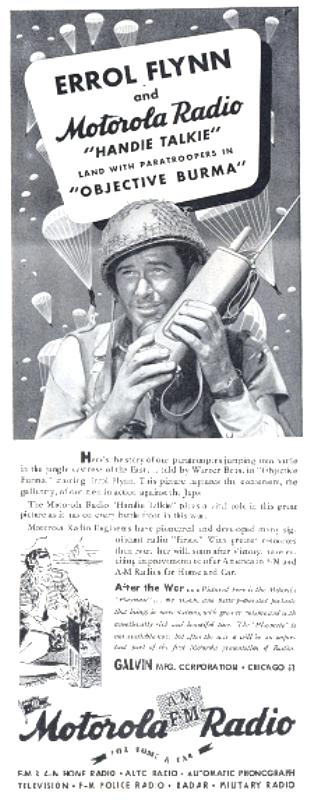
Filmmaking was one of the few industries that continued almost uninterrupted during the war.In fact, the war gave movie-makers timely subject matter.
This ad for Motorola Radio features the 1945 Warner Bros. movie, "Objective Burma" starring Errol Flynn.No doubt based on some facts, the movie was fictional and glorified the American effort in Burma, while making almost no mention of larger British contributions.
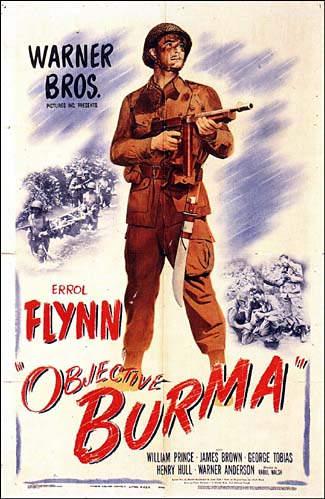 The movie summary:
The movie summary:
A group of men parachute into Japanese-occupied Burma with a dangerous and important mission:to locate and blow up a radar station. They accomplish this well enough, but when they try to rendezvous at an old air-strip to be taken back to their base, they find Japanese waiting for them, and they must make a long, difficult walk back through enemy-occupied jungle.
Not only does this ad mention the radios produced for the war effort, but those waiting to be produced for consumers after the war.By 1945 the theme of most printed advertising had shifted from "Back the attack" to "After the war..."
Click image at left to view text of ad or
click movie poster at right for more about the movie.

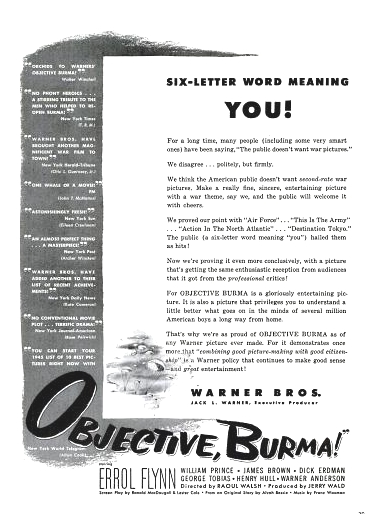
Newspapers and radio were full of war news.Many people headed to the movies to escape the war for a while.So who would want to see a "war picture?"Warner Bros. answered that question with this ad for Objective, Burma!.
Click on the image of the ad and take a closer look...


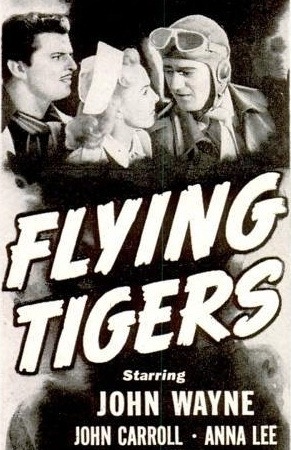
"The Duke" starred in many World War 2 related films including this lesser-known one from 1942 about the American Volunteer Group "Flying Tigers."
Click image at left to view text of ad.
Click image at right for more about the movie.

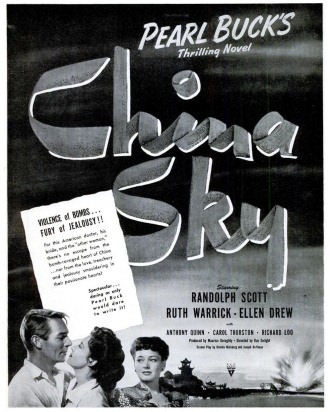
RKO Radio Pictures advertised their new movie based on the book by Pearl Buck.
Click on the image of the ad and take a closer look...

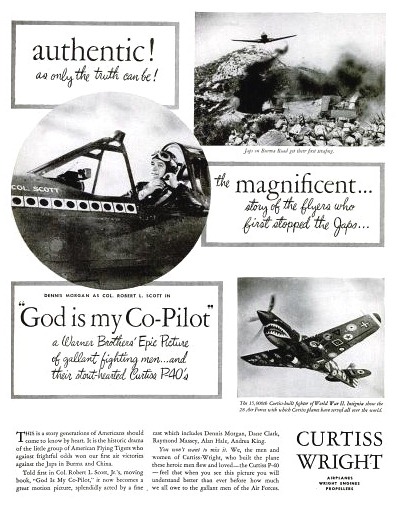
Another movie about the Flying Tigers was based on Col. Robert Scott's book God is my Co-Pilot.This Curtiss-Wright ad featured the "epic picture of gallant fighting men and their stout-hearted Curtiss P-40's."
The plane was known as the Warhawk by the U.S. Army but later models were also known as the Tomahawk and Kittyhawk.A total of 13,738 were built, flown by 28 different Allied air forces as indicated in the ad.
Production of the plane had already ceased by the time this March 1945 ad appeared in LIFE magazine.
Click on the image of the ad and take a closer look...

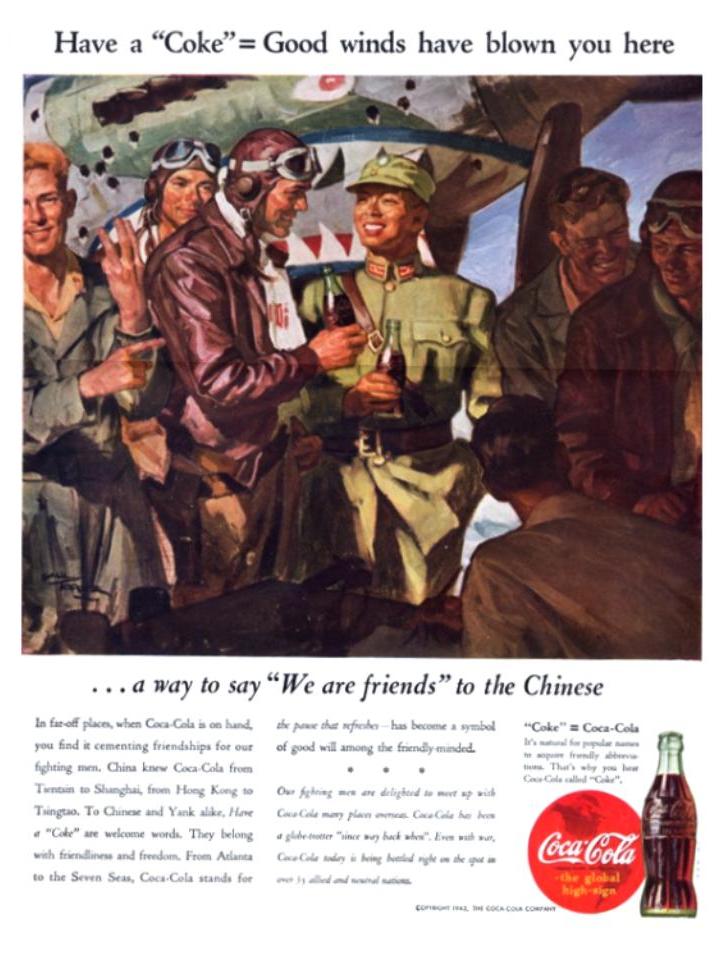
This 1943 advertisement in LIFE by Coca-Cola says that "Coke" is a way to say "We are friends" to the Chinese.It shows American Flying Tigers and Chinese drinking Coca-Cola.The ground crewman at left seems to be indicating three "kills" for the pilot and his shot-up plane in the background.
It also explains the relatively new nickname "Coke" for "Coca-Cola" by saying:It's natural for popular names to acquire friendly abbreviations. That's why you hear Coca-Cola called "Coke".
Click on the image of the ad and take a closer look...

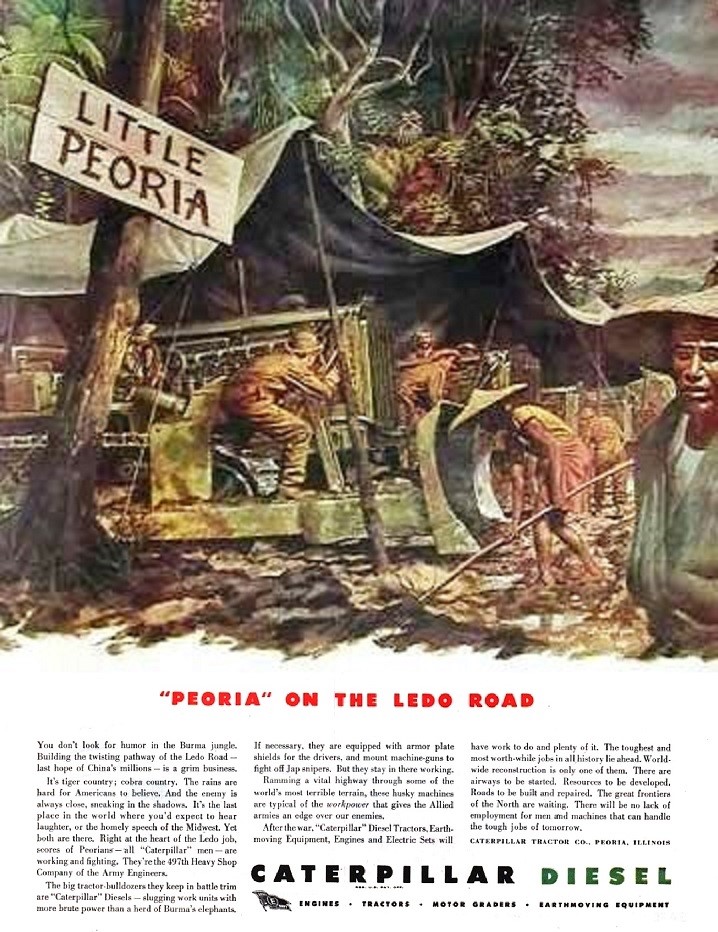
This advertisement in LIFE by Caterpillar features Little Peoria on the Ledo Road.Peoria, Illinois was where Caterpillar bulldozers were built.
"Little Peoria" on the Ledo Road in Burma is where they were serviced.
In need of skilled workers to maintain and repair the equipment being used in India and Burma, the U.S. Army Corps of Engineers called on Caterpillar.
The 497th Engineer Heavy Shop Company was the first unit in American history organized by a manufacturing company and manned primarily by its own employees.
Click on the image of the ad and take a closer look...


"Look what's still buzzin' in Bombay!"
It's not often that an ad for new cars features a picture of one that's twelve years old, but that's what Plymouth did here.A 1932 Plymouth still running as a taxi in Bombay, India, is featured in this 1944 ad to illustrate that Plymouth builds great cars.
Click on the image of the ad and take a closer look...

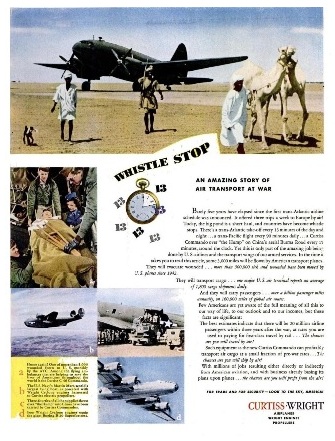
An Amazing Story of Air Transport at War
Curtiss-Wright advertised the fact that their C-46 Commandos cross The Hump every 15 minutes.They go on to say that three-fourths of all supplies flown over The Hump went in Curtiss Commandos.
Click on the image of the ad and take a closer look...

This ad tells the story of a shrinking world - thanks to air travel
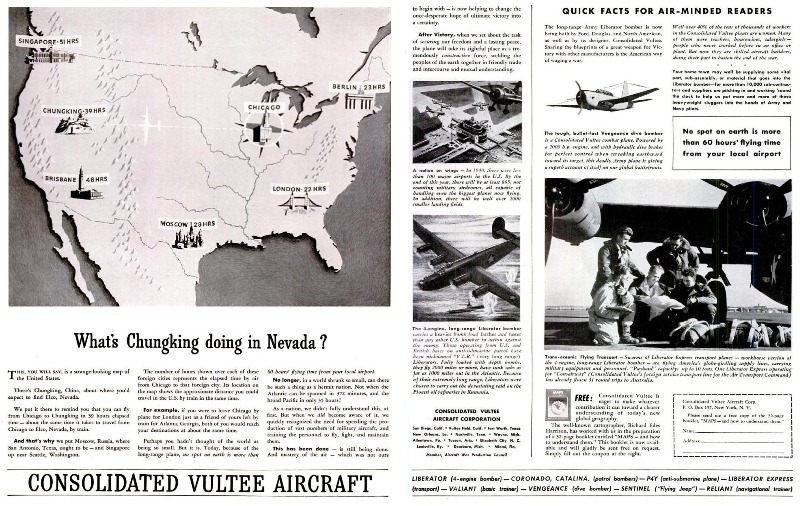
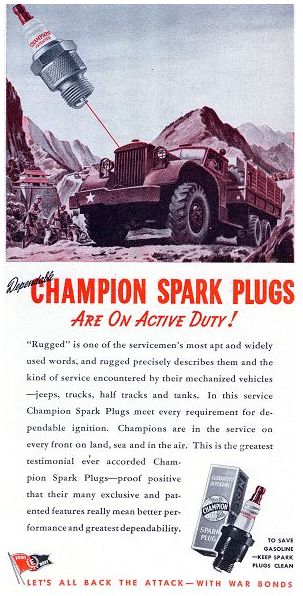
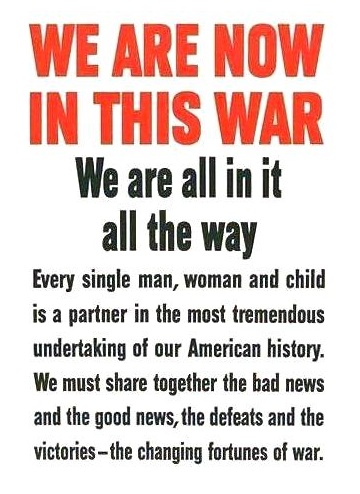
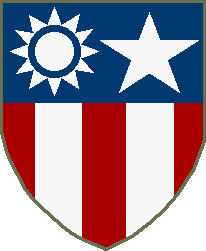 Even the lesser-known China-Burma-India Theater caught the advertiser's eye.Below are some World War II era magazine ads related to the CBI Theater and also some other interesting advertising.
Even the lesser-known China-Burma-India Theater caught the advertiser's eye.Below are some World War II era magazine ads related to the CBI Theater and also some other interesting advertising.



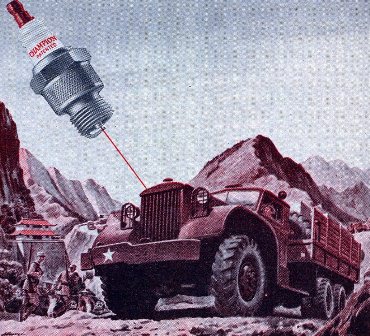

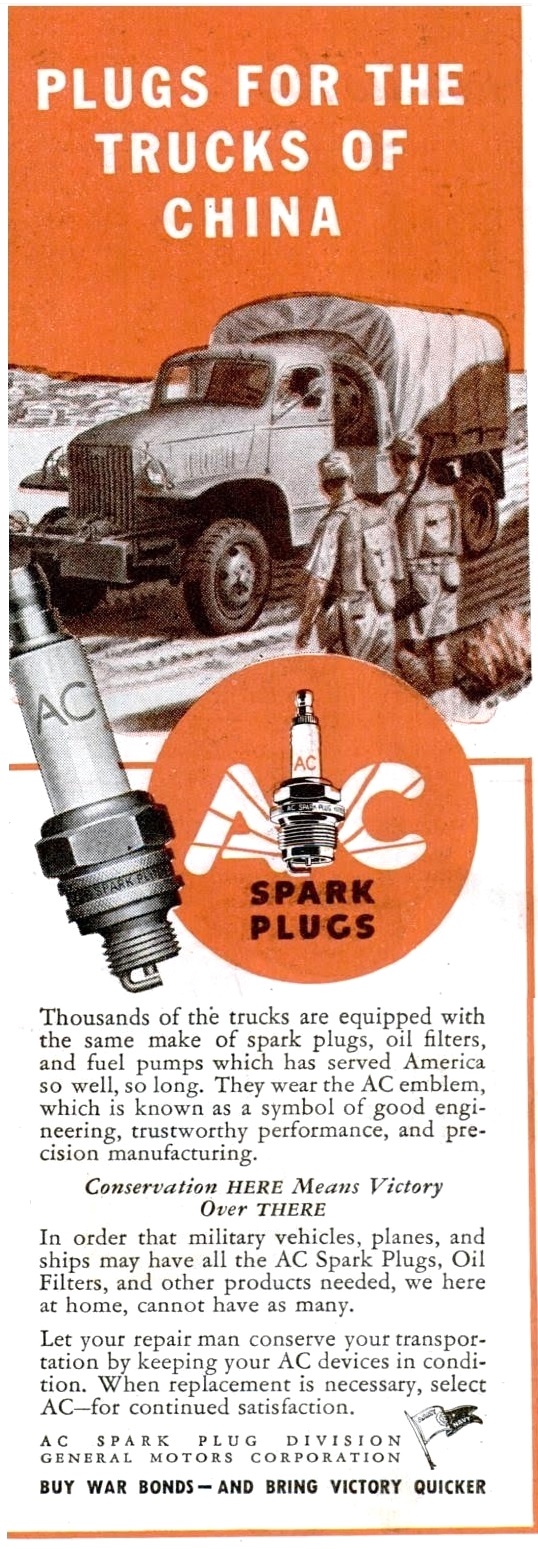

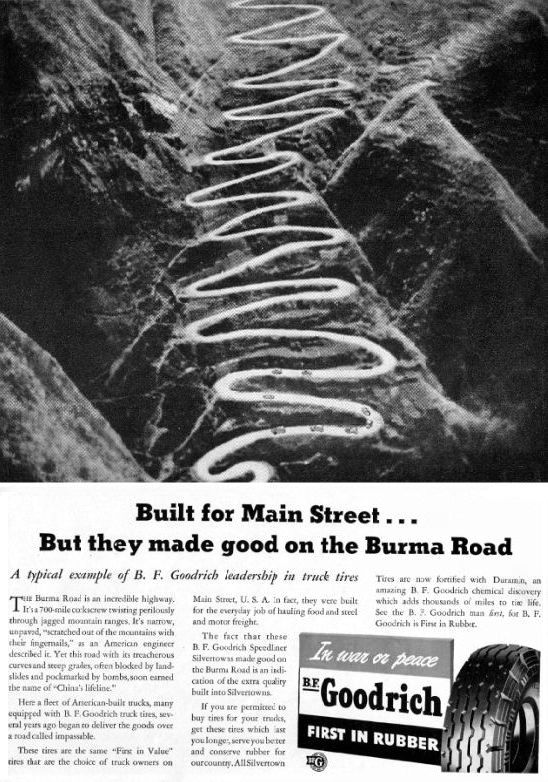



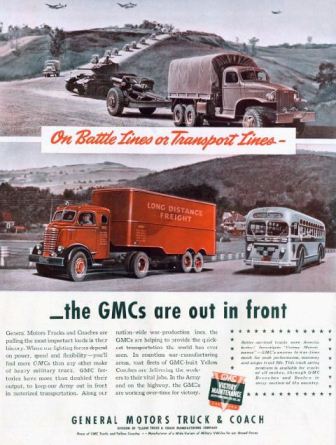
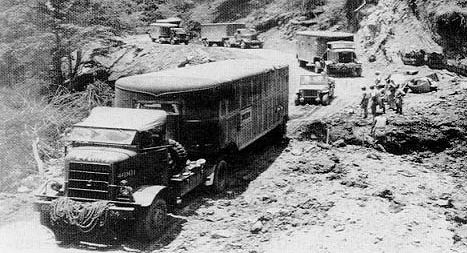

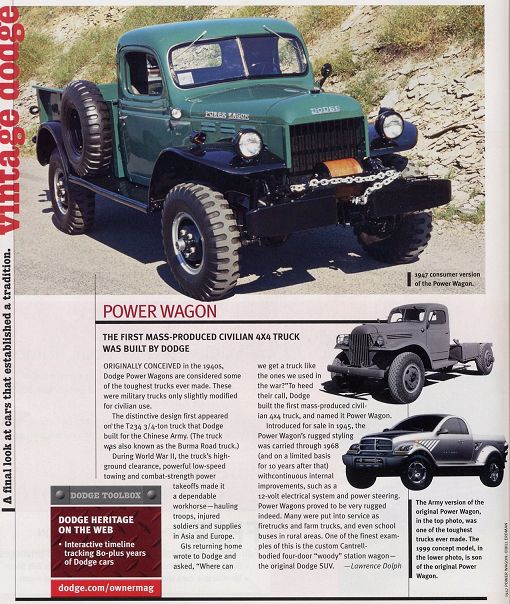
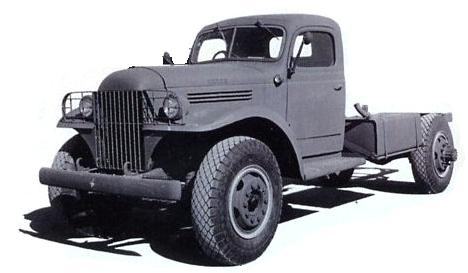

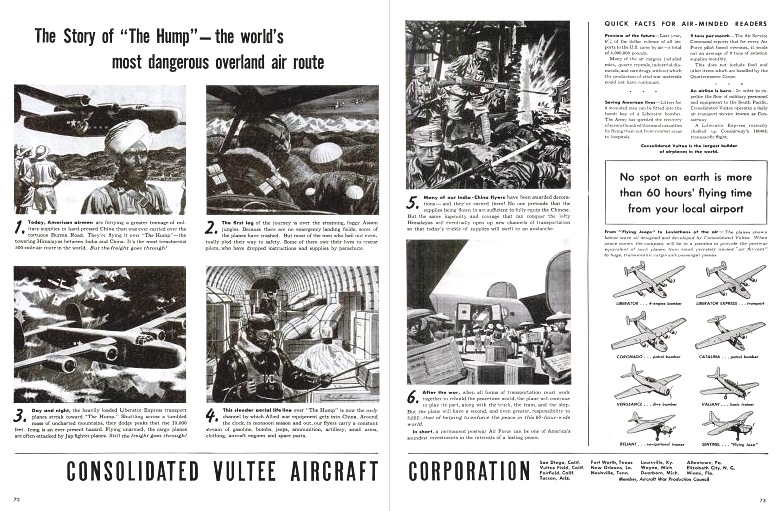

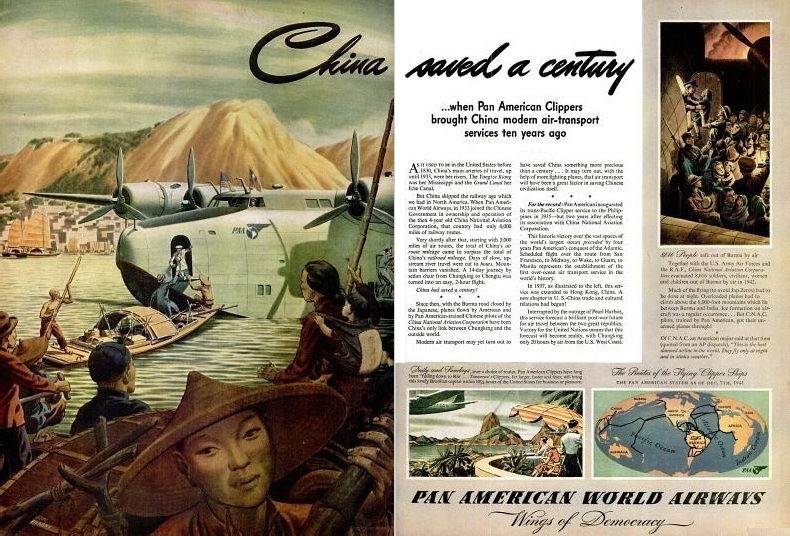

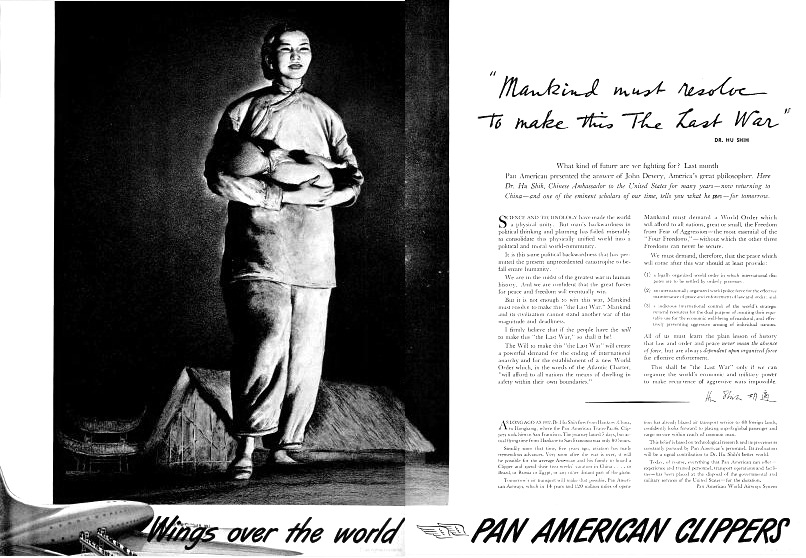

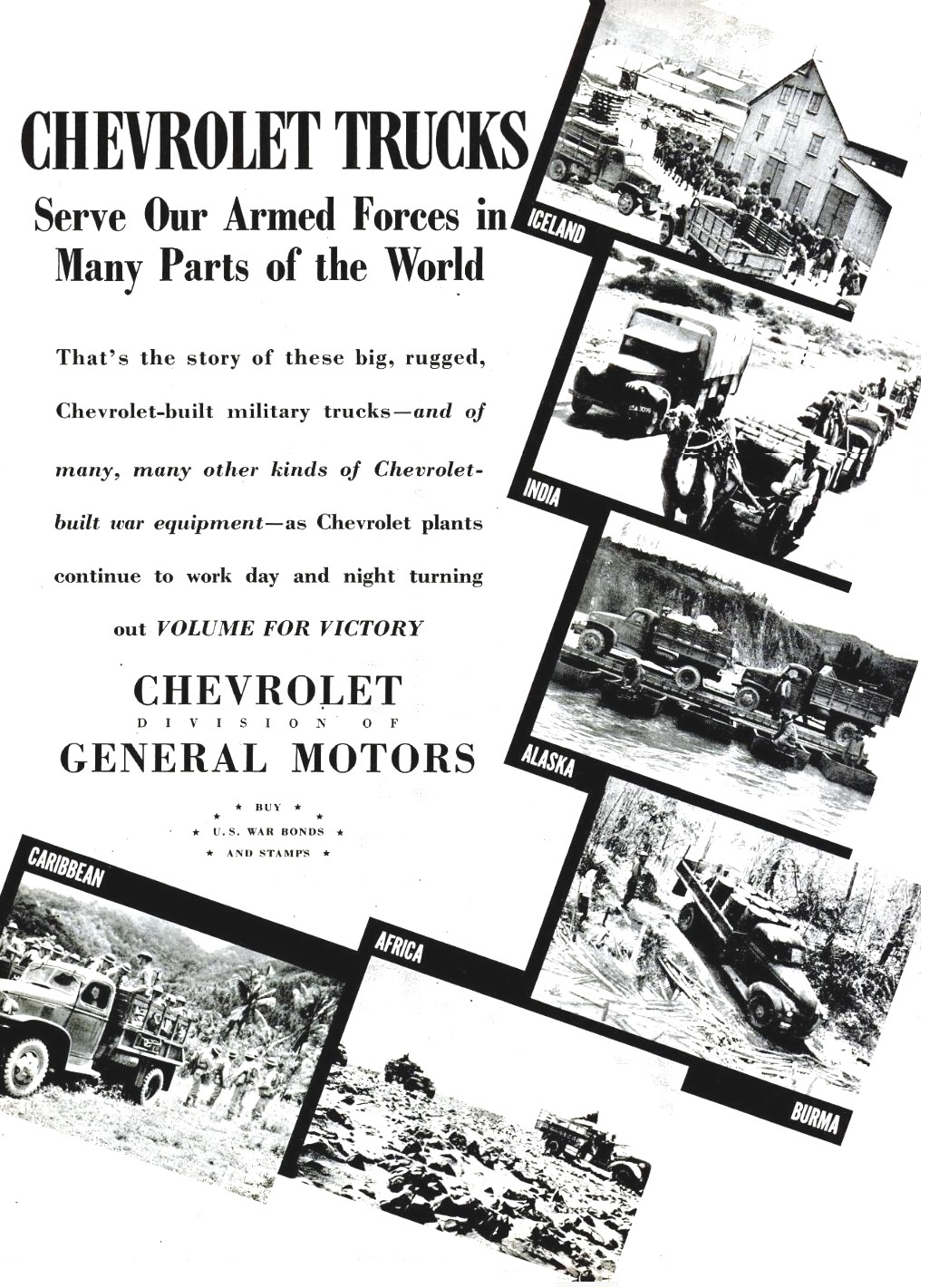
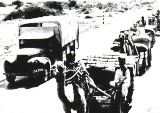 INDIA
INDIA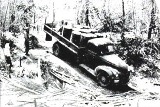 BURMA
BURMA


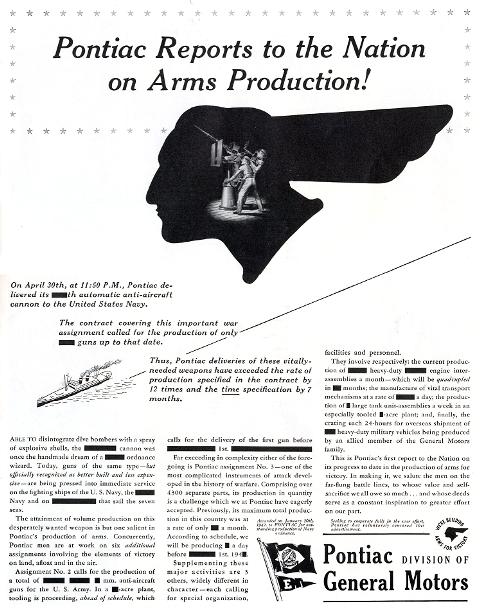 This ad is not related to CBI but interestingly illustrates what could be called "Censored Advertising."
This ad is not related to CBI but interestingly illustrates what could be called "Censored Advertising."
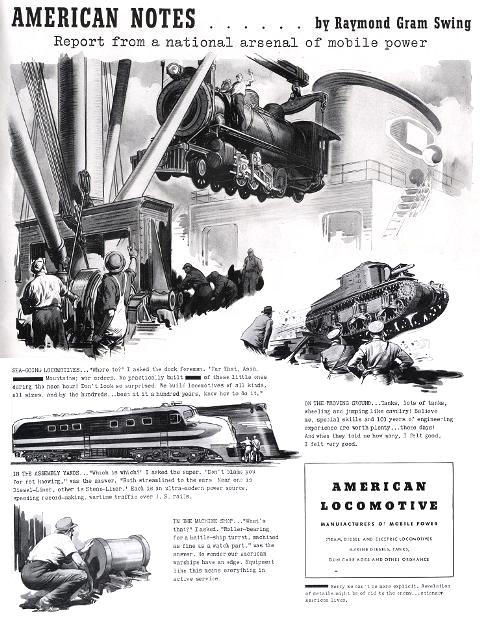 Here is another example of "Censored Advertising." This one apologized by indicating:
Here is another example of "Censored Advertising." This one apologized by indicating:
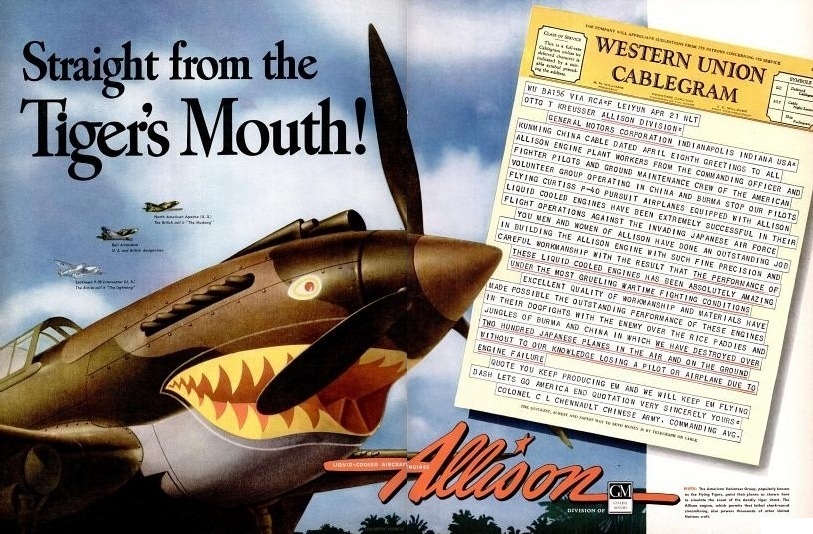

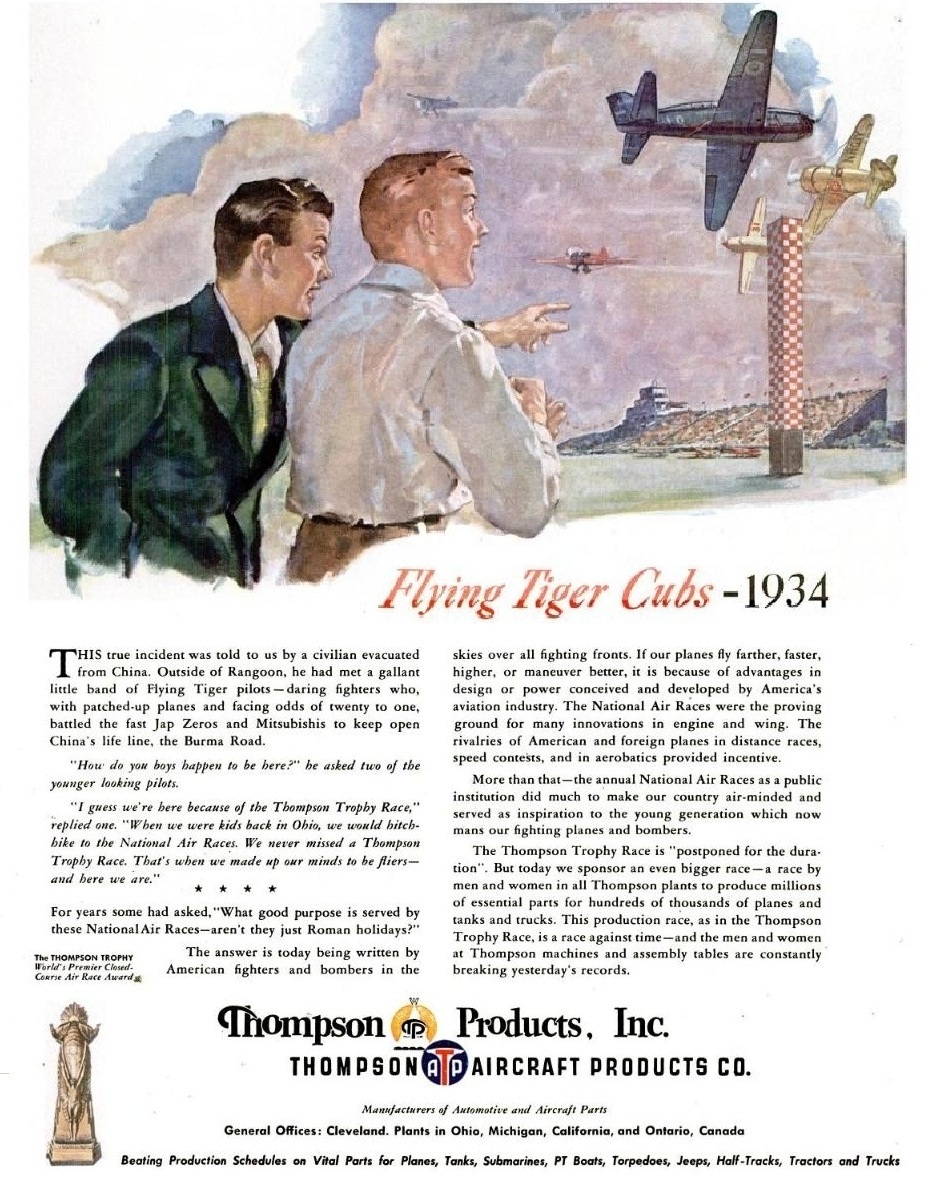 Thompson Aircraft Products also featured the Flying Tigers in this story of why one of them became a pilot.
Thompson Aircraft Products also featured the Flying Tigers in this story of why one of them became a pilot.
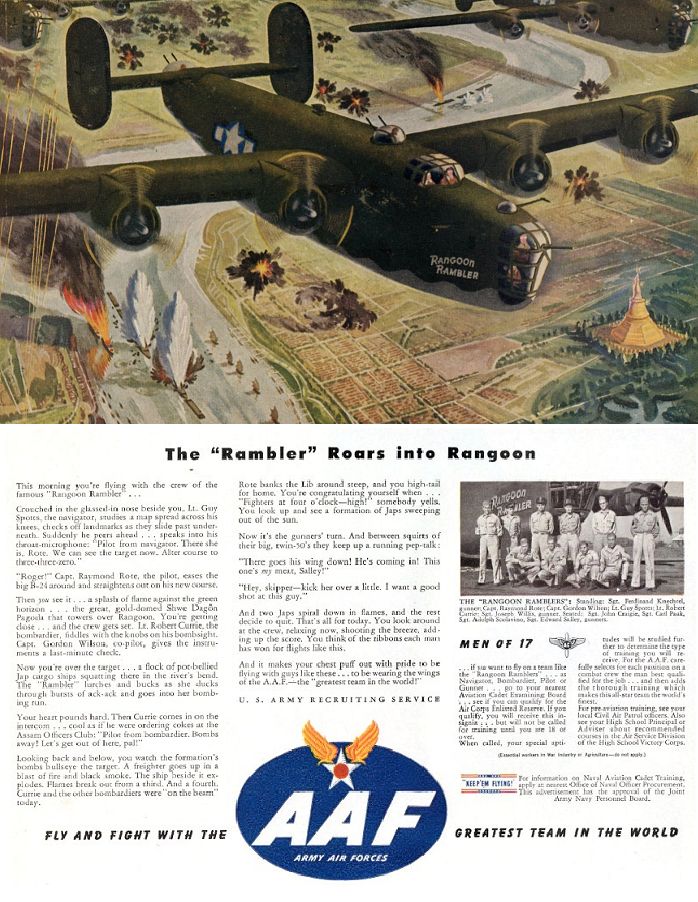 This ad from the U.S. Army Recruiting Services features a story of the "Rangoon Rambler" over CBI.It speaks of the adventure of a bombing run over Rangoon, Burma.Also included is the story of the crew of the B-24 Liberator.
This ad from the U.S. Army Recruiting Services features a story of the "Rangoon Rambler" over CBI.It speaks of the adventure of a bombing run over Rangoon, Burma.Also included is the story of the crew of the B-24 Liberator.

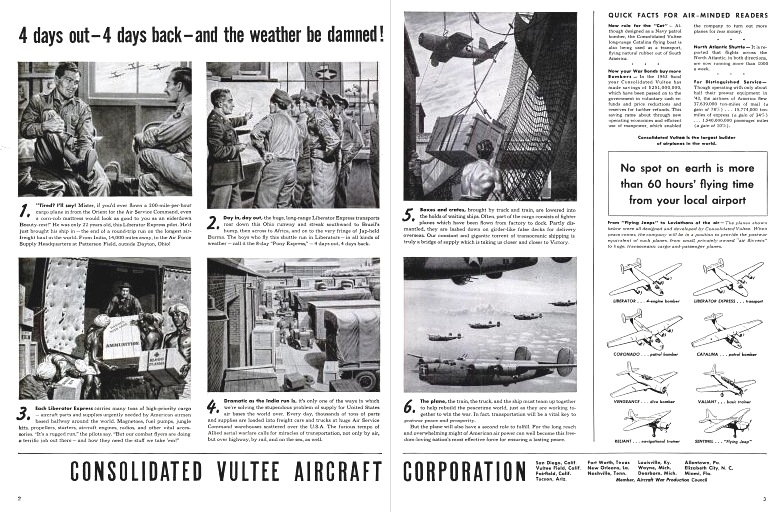

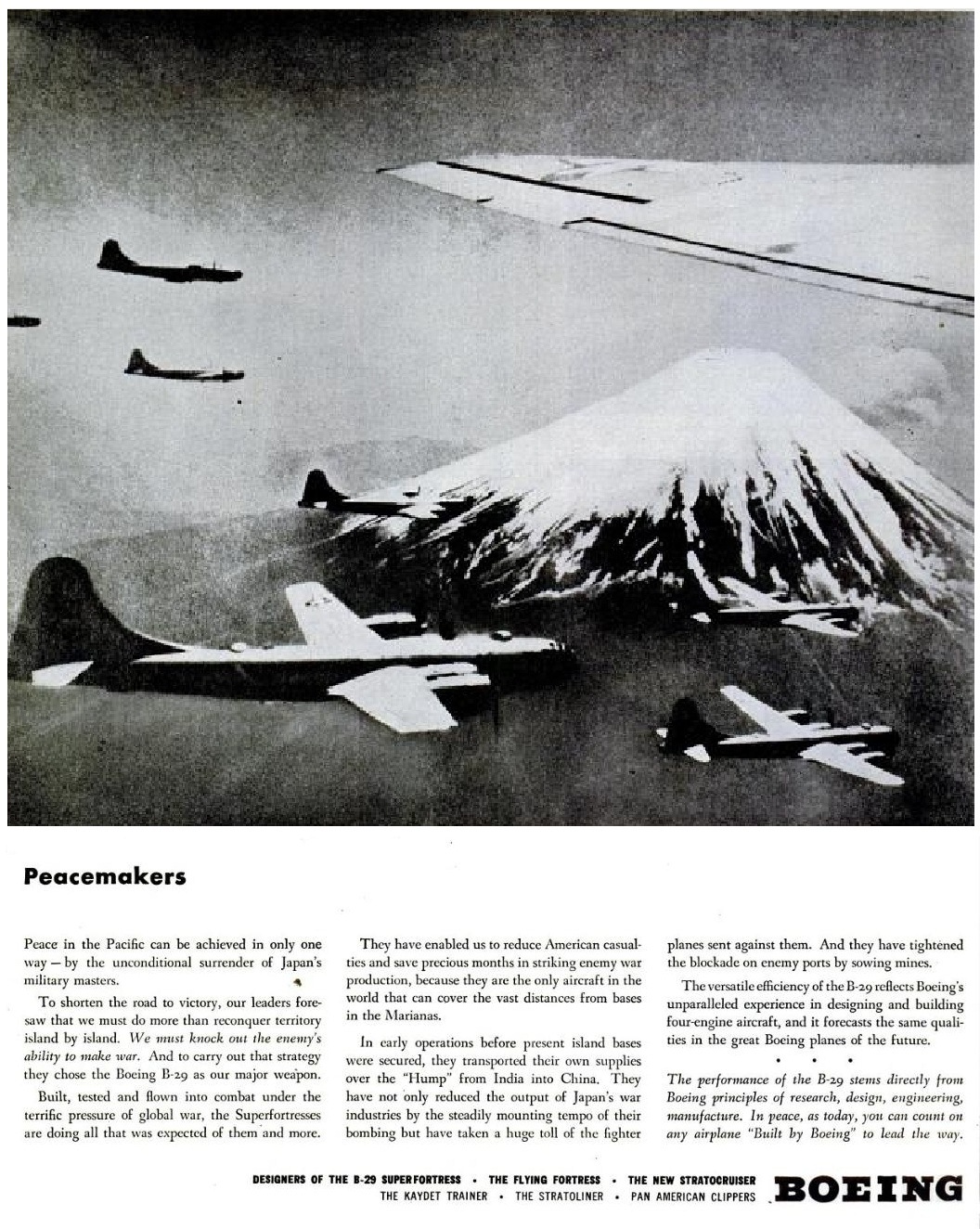

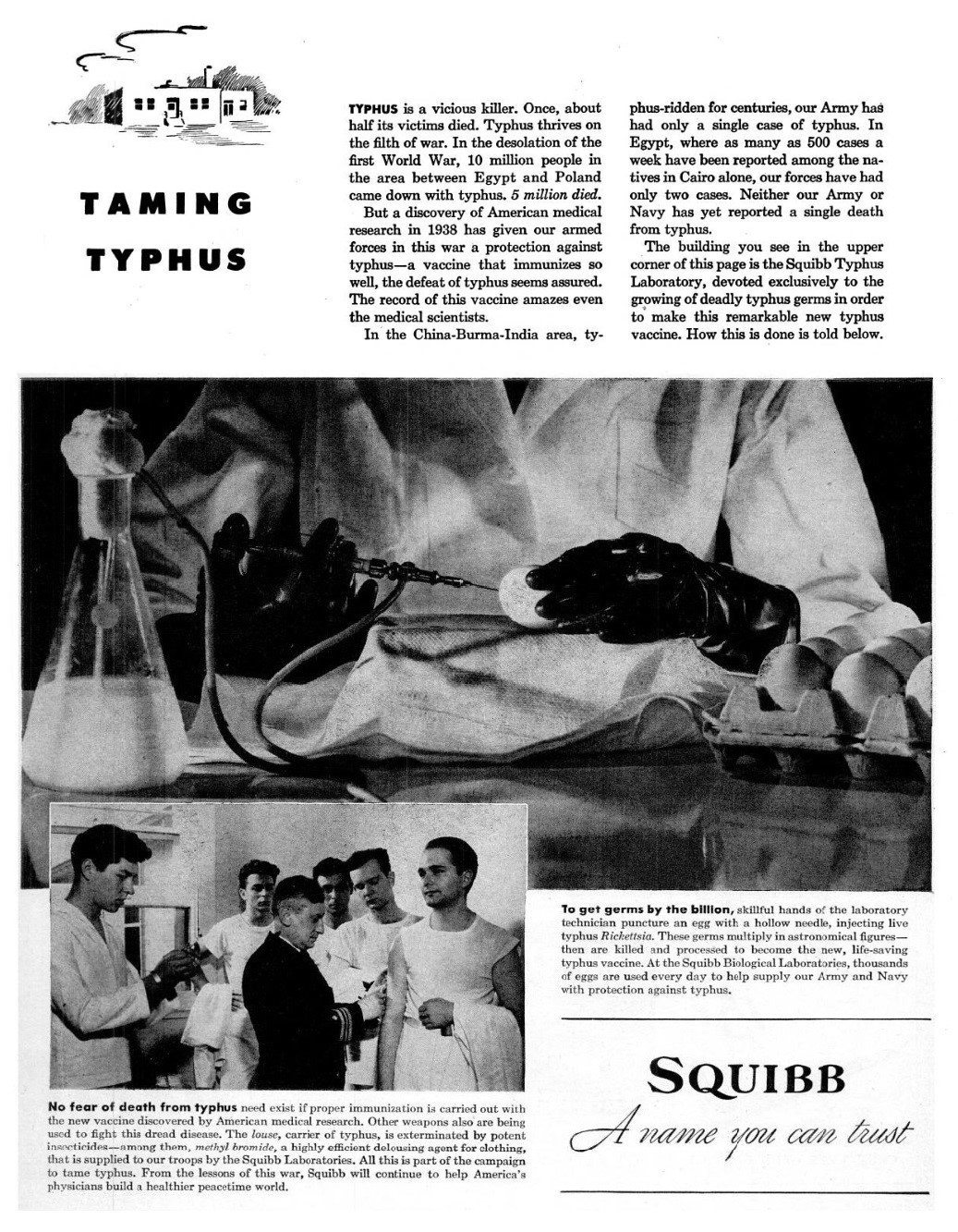


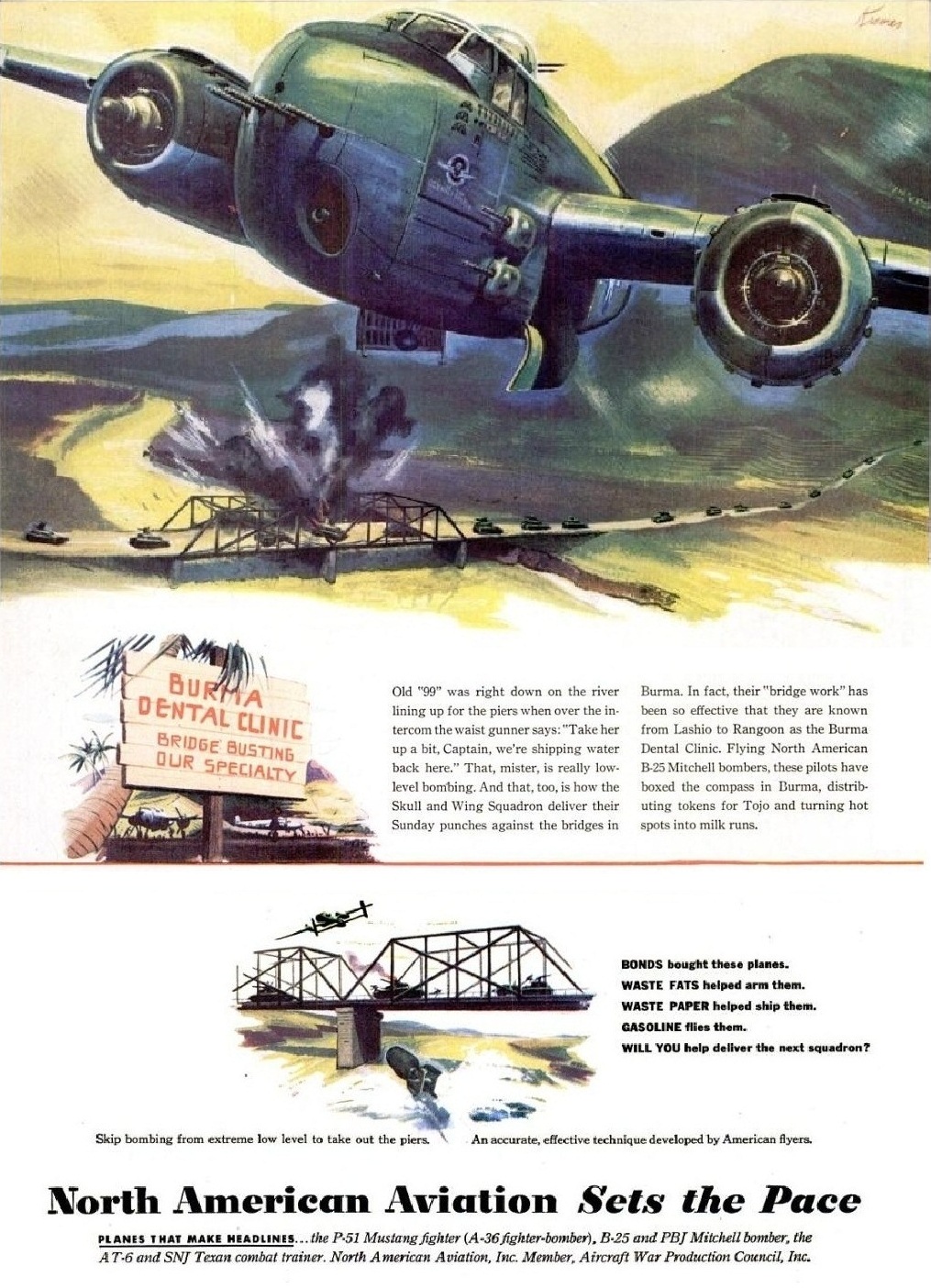 North American Aviation featured their B-25 Mitchell bomber in skip-bombing action over Burma in this ad from the February 5, 1945 issue of LIFE magazine.
North American Aviation featured their B-25 Mitchell bomber in skip-bombing action over Burma in this ad from the February 5, 1945 issue of LIFE magazine.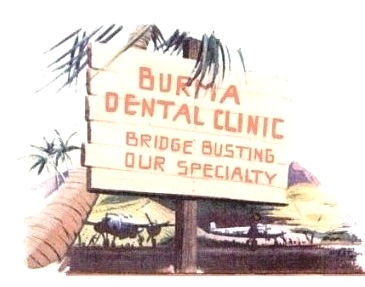

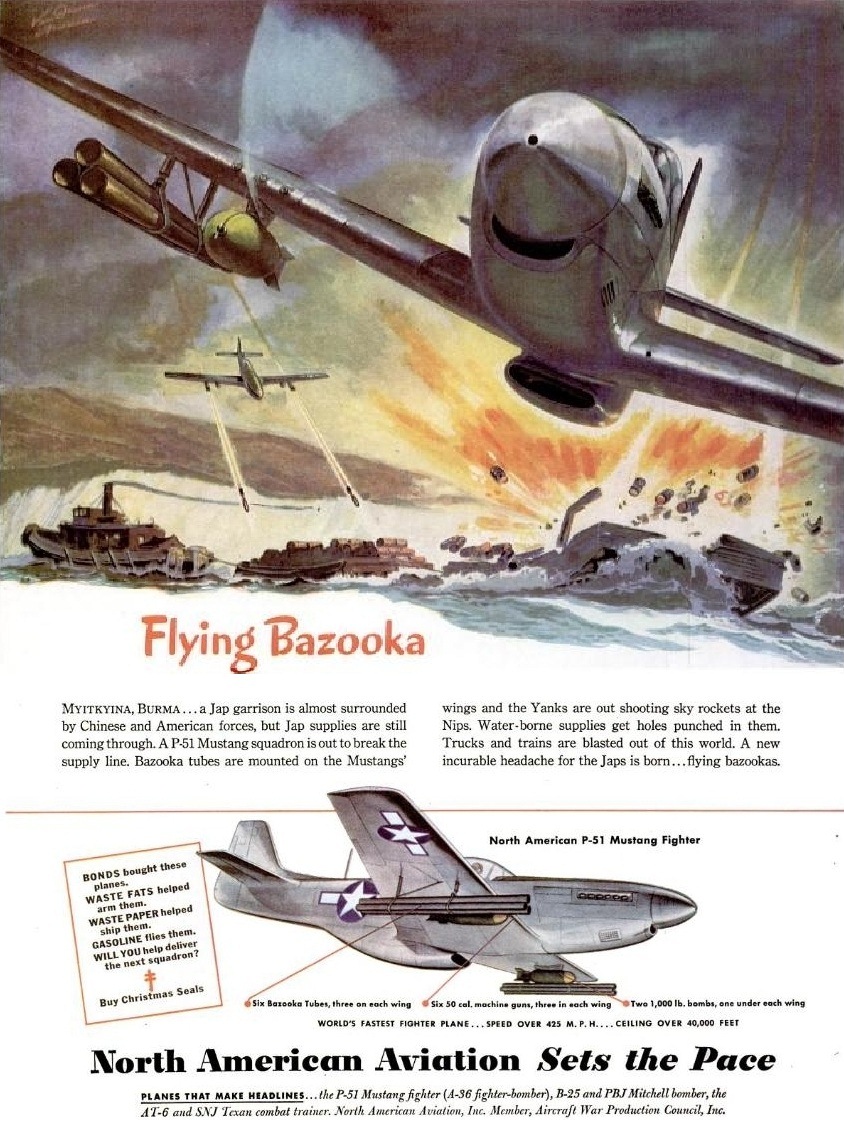

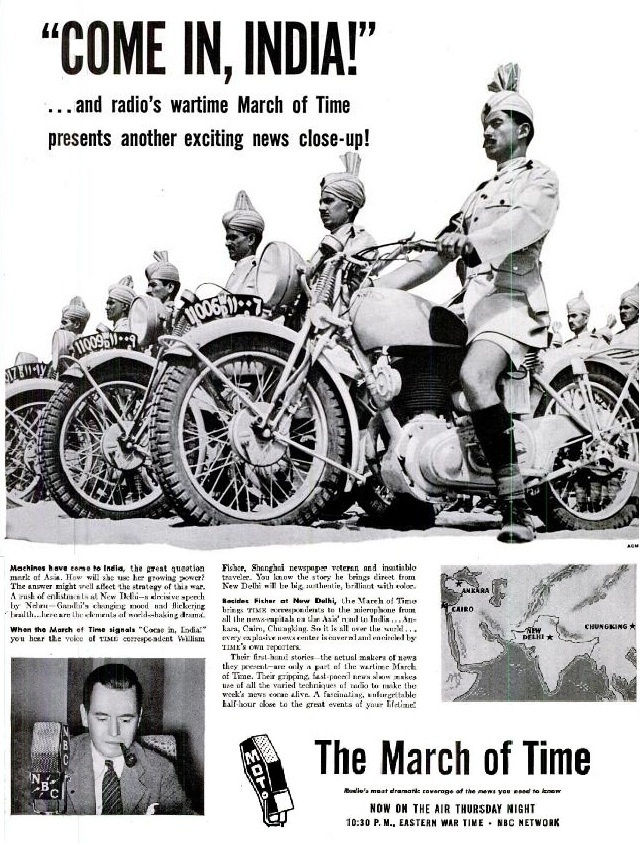

 Studebaker Flying Fortress ?
Studebaker Flying Fortress ?








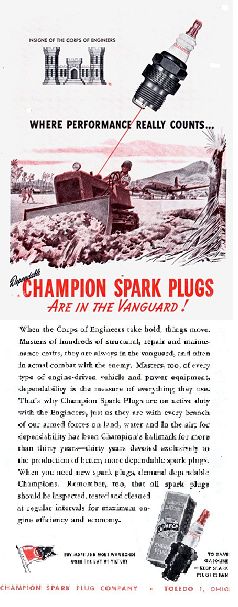
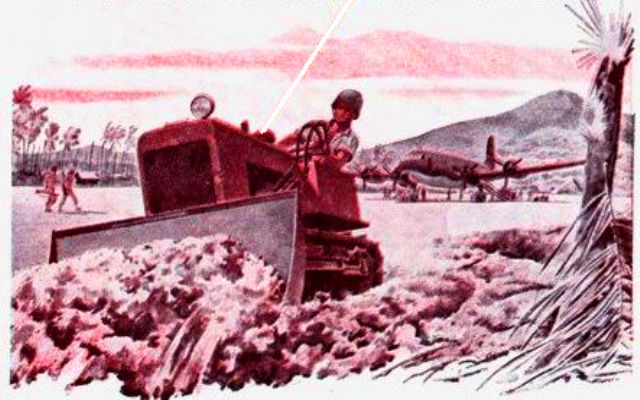

 Women's Army Corps.
Women's Army Corps.
 Somewhere South of Chungking!
Somewhere South of Chungking!



 The movie summary:
The movie summary:



















